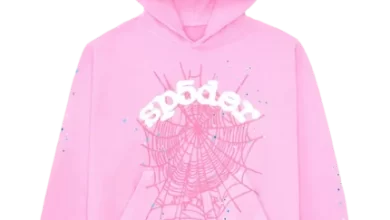Pakistani Fashion – Celebrating Diversity And Tradition
Pakistan boasts a thriving fashion industry that is influenced by a varied range of traditions and heritages. Pakistani formal dresses have left their imprint on the international fashion scene with their elaborate needlework and striking designs.
However, what distinguishes Pakistani fashion from other styles? Let’s celebrate the diversity and tradition of Pakistani fashion while examining its beauty.
Over time, Pakistani fashion has changed, fusing contemporary styles with traditional components to produce original looks.
Pakistani fashion now reflects the ethnic diversity and cultural mosaic of the nation due to the blending of many regional influences and cultural traditions.
In this column, we’ll delve into the lengthy history of Pakistani fashion, highlighting the iconic looks, timeless styles, and well-known designers who have shaped the industry.
As we celebrate Pakistani fashion’s beauty, we will recognize its uniqueness in terms of craftsmanship, inventiveness, and cultural significance. Get ready to become engrossed in the fascinating world of Pakistani fashion.
A Tapestry of Diversity
Pakistan, with its diverse cultural landscape, is home to a myriad of ethnicities, each with its distinct traditions and attire. From the flamboyant dresses of Punjab to the graceful saris of Sindh, Pakistani fashion reflects the rich tapestry of its people.
Punjab
The heartland of Pakistani culture, Punjab, is renowned for its vibrant and colorful attire. The traditional Punjabi attire, including the iconic shalwar kameez adorned with intricate embroidery and vibrant hues, embodies the spirit of joy and celebration.
Sindh
Sindh, with its ancient civilization and rich heritage, boasts a unique fashion identity. The traditional Sindhi attire, characterized by the graceful drape of the sari and elaborate mirror work, reflects the region’s cultural richness and artistic sensibilities.
Balochistan
The rugged terrain of Balochistan is mirrored in its traditional attire, which is defined by its simplicity and functionality. The Balochi dress, with its loose-fitting garments and bold geometric patterns, reflects the nomadic lifestyle of the Baloch people.
Khyber Pakhtunkhwa (KP)
The mountainous region of Khyber Pakhtunkhwa is home to a diverse array of ethnic groups, each with its unique sartorial traditions. The traditional attire of KP, characterized by intricate needlework and vibrant colors, is a testament to the region’s rich cultural heritage.
Traditional Craftsmanship
At the heart of Pakistani fashion lies its rich tradition of craftsmanship, passed down through generations. Pakistani artisans are renowned for their exquisite embroidery, intricate embellishments, and fine craftsmanship, which elevate even the simplest of garments to works of art.
Embroidery
Embroidery occupies a central place in Pakistani fashion, with each region boasting its distinctive styles and techniques. From the delicate threadwork of the chikan embroidery to the intricate mirror work of Sindh, Pakistani embroidery reflects the skill and artistry of its craftsmen.
Textiles
Pakistan is celebrated for its rich textile heritage, with fabrics ranging from luxurious silks and chiffons to handwoven kinds of cotton and linens. The intricate patterns and vibrant colors of Pakistani textiles are a testament to the country’s rich cultural heritage and artistic traditions.
Handicrafts
Pakistani fashion is also enriched by a diverse array of handicrafts, including pottery, metalwork, and wood carving. In addition to giving fashion a distinctive touch, these age-old crafts support the livelihoods of many workers around the nation.
Bridal Couture
Bridal couture holds a special place in Pakistani clothes, with weddings being lavish affairs steeped in tradition and splendor. Pakistani bridal wear is characterized by its opulence, with intricate embroidery, luxurious fabrics, and elaborate embellishments adorning the bridal ensemble.
Lehenga Choli
The traditional bridal attire of Pakistan, the lehenga choli, is a stunning ensemble comprising a flared skirt (lehenga), a fitted blouse (choli), and a sheer dupatta. Embellished with intricate embroidery, zardozi work, and sparkling embellishments, the lehenga choli epitomizes luxury and elegance.
Sherwani
The groom’s attire is no less grand, with the sherwani being the quintessential choice for Pakistani grooms. Elaborately embroidered and tailored to perfection, the sherwani exudes regal charm and sophistication, making the groom the epitome of grace and style on his wedding day.
Conclusion
Pakistani fashion is a mesmerizing fusion of diversity, tradition, and craftsmanship. From the vibrant hues of Punjab’s attire to the elegant saris of Sindh, it mirrors the country’s rich cultural heritage.
With its intricate embroidery, lavish textiles, and magnificent bridal ensembles, Pakistani fashion captures the essence of timeless charm and grace.
Despite evolving trends, it remains rooted in tradition, blending the legacy of yesteryears with contemporary influences to create a captivating narrative of style.
Each region contributes its unique flair, from the flamboyant kurtas of Khyber Pakhtunkhwa to the intricately detailed shalwar kameez of Balochistan.
Pakistani fashion showcases a kaleidoscope of colors, textures, and motifs, reflecting the diversity of its people and their traditions.
With its unwavering commitment to craftsmanship and attention to detail, Pakistani fashion continues to enchant the world, transcending borders and inspiring designers globally. It’s a celebration of heritage, identity, and the timeless allure of creativity.



